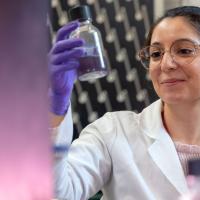Jonathan Lunine, the David C. Duncan Professor in the Physical Sciences and director of Cornell Center for Astrophysics and Planetary Science at Cornell University, writes in this Washington Post opinion piece about his work as a scientist on the Cassini mission for the past 27 years.
"What Cassini and its Huygens probe found was beyond all scientific expectations," Lunine writes. "The surface of Titan hosts Earth-like valleys, river channels, lakes and seas, through which flows not water but liquid methane — perfectly stable under the frigid conditions a billion miles from the sun."
The spacecraft entered Saturn's atmosphere Sept. 15 and disintegrated after sending its last signals.
"What’s next for the Saturn system and its dynamic, intriguing moons?" Lunine writes. "With limited resources, NASA must make choices among the various ideas for future exploration. But the annual cost of even a modest program of missions to these moons is small compared to the total NASA budget. A billion miles across space, ocean worlds orbiting the ringed planet beckon us to come again — this time to find out whether they hide gardens of unearthly microbial delights."
Read the entire Washington Post piece here.




